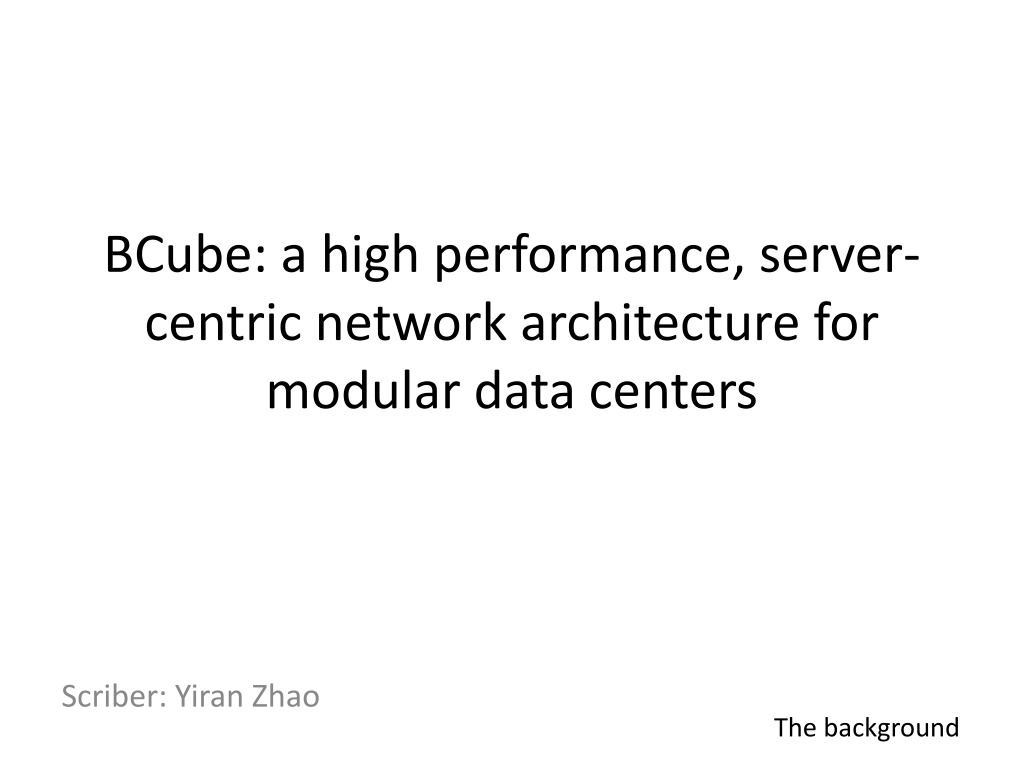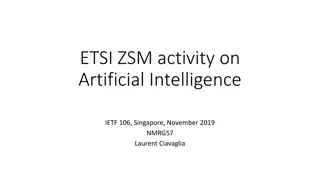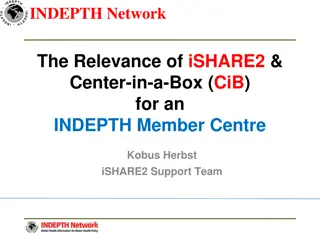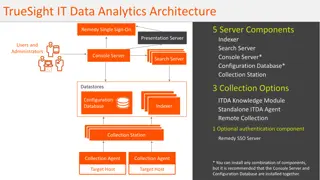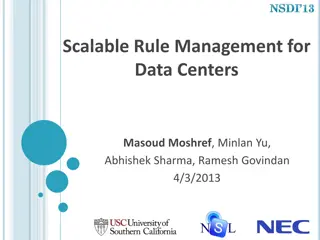Understanding BCube Network Architecture for Data Centers
BCube is a high-performance, server-centric network architecture designed for modular data centers. The architecture includes multiple levels, ports, and NICs to enable efficient data transfer and management. BCube offers benefits such as modularity, source routing, commodity switches, high capacity with multiple paths, and low latency with small hops. Additionally, the CubicRing technology enables one-hop failure detection and recovery for distributed in-memory storage systems, providing fast, reliable detection and recovery mechanisms.
Download Presentation

Please find below an Image/Link to download the presentation.
The content on the website is provided AS IS for your information and personal use only. It may not be sold, licensed, or shared on other websites without obtaining consent from the author. Download presentation by click this link. If you encounter any issues during the download, it is possible that the publisher has removed the file from their server.
E N D
Presentation Transcript
BCube: a high performance, server- centric network architecture for modular data centers Scriber: Yiran Zhao The background
BCube(n,k) n ports, k+1 levels, k+1 NICs BCube(2,2) Level 2 BCube(2,1) Level 1 BCube(2,0) Level 0 000 001 010 011 100 101 110 111
Path length = 1 hop Level 2 Level 1 Level 0 000 001 010 011 100 101 110 111
Path length = 2 hops. 2*1 paths. Level 2 Level 1 Level 0 000 001 010 011 100 101 110 111
Path length = 3 hops. 3*2*1=6 paths. Level 2 Level 1 Level 0 000 001 010 011 100 101 110 111
BCube Modularity. Server-centric: source routing. Commodity switches. High Capacity: multiple paths. Low latency: small hops.
CubicRing: Enabling One-Hop Failure Detection and Recovery for Distributed In-Memory Storage Systems Scriber: Yiran Zhao
Cons: Only cubic topology. Limited data model. Not specific about dynamic re- assignment of keys. Only evaluate multiple failures of primary servers. Global coordinator SPF? (mapping key space, failure detection, recovery) Over-provision RAM. Fragmentation is an issue. Not good if geo-distributed. False failure detection expensive. Consistency. Not show decrease in false detection rate. Pros: Fast, reliable failure detection. Fast recovery. Distinguish switch failure from server failure. Handle stragglers.
Thoughts Writes need 2 hops, recovery needs 1 hop? P R B P B R V.S. P transfers writes and waits for all B to return? How many hops between coordinator and P ? Equal Cost Multi-Path? Backup battery? Wiring complexity?
